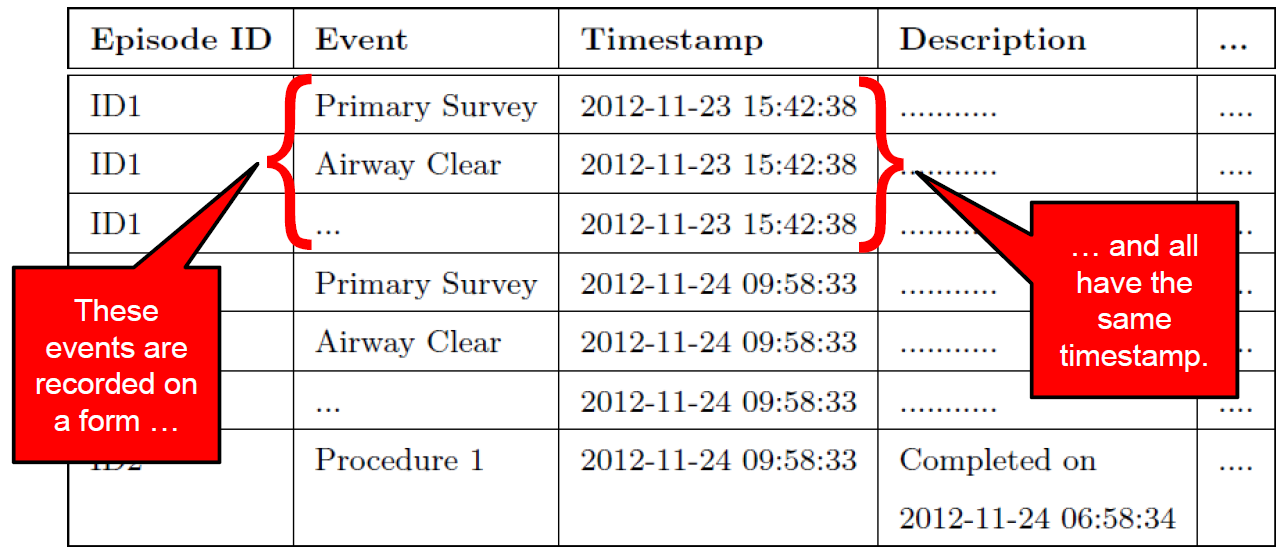Description |
- Data in event log is captured from an electronic form
- User clicks Save to record entered data
- All data items captured on the form have the same timestamp
- Information about event ordering is ‘flattened’ into a single timestamp (time when the user clicked Save button)
- Updating the form may result in all data items (not only changed data items) being re-written to the log
- Apparent duplication of events
|
Affect |
- Complex discovered process models
- Events with same timestamp treated as parallel events
- Increased number of (and cross-cutting of) arcs on graphical models
- Extraction of misleading process mining results
- Due to inclusion of events that did not actually occur
|
Data Quality Issues |
I16 - Incorrect data: timestamp, I27 - Irrelevant data: event
- The temporal flattening introduced through the occurrence of this pattern negatively impacts the attribute accuracy of the log
- Timestamps of the events reflect the saving of the form rather than the performance of the event
- If the system records all fields on the form rather than only those fields that have changed, the trace completeness may be affected
- Through erroneous inclusion of events that did not actually happen in the case
|
Manifestation and Detection |
 |
- Pattern signature - groups of events, in the log with the same case identifier and same timestamp value
- Marker events - existence of events with activity names similar to field labels known to exist on the same form
|
Remedy |
- Simple — Aggregate all events, within each group of events having the same timestamp, into one event
- Aggregated event represents the actual process step that took place
- Alternate — Where events with similar timestamps contain two or more distinct and/or important process steps
- Aggregate into two or more events reflecting the distinct process steps
- NB: These new, aggregated events will share the same timestamp
- Complex — An update to only some of the fields the form, triggers the recording of a new set of events, each with the same timestamp (some of which may be duplicate events because their values did not require any updates).
- The updates of one or more data items in a form result in the recording of all fields as events in the log, or
- The updates of one or more fields in a form will result in the recording of only those fields whose values have changed
- Determine which fields have actually changed
- Aggregate into one or more events reflecting the distinct process steps
|
Side-effects of Remedy |
|
Where a process requires a form update, it may be the case that, for a given activity, the `new' value of a data item is the same as the `old' value of the data item. Where the form logging mechanism writes out all data values in the form, the fact that the `old' and `new' values of the data item are the same makes it dicult to determine whether the activity was carried out a second time or the data item was simply re-written as part of the form update process. In this scenario, we may lose the `update' action on those fields where `new' values and `old' values are the same.
|

